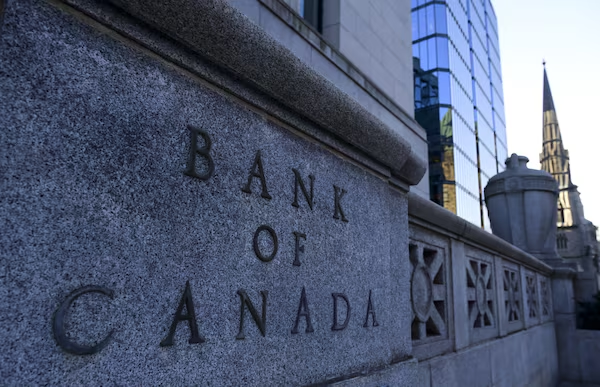The Bank of Canada (BOC) plays a crucial role in setting the economic stage for Canada. Through its interest rate adjustments, the Bank aims to control inflation and promote healthy economic growth. Let’s delve into Canada’s bank interest rates for 2024, exploring the current landscape, recent changes, and future predictions.
Current Interest Rate Setting: A Pause After a Period of Increase
As of today, May 10, 2024, the target interest rate set by the BOC stands at 5%. This signifies the rate at which banks borrow money from the central bank. It’s important to note that this is distinct from the 7.25% figure you might encounter elsewhere.
Here’s where things get a bit more nuanced. In January 2024, the BOC established a target rate of 7.25%. However, there haven’t been any further adjustments since then. This 7.25% figure reflects a series of interest rate hikes implemented throughout 2023 to combat inflation.
Expected Trajectory: A Potential Shift Towards Lower Rates
While the target rate has remained steady in 2024, analysts predict a potential decrease in the coming months. The BOC is expected to cut the target rate by 2% by the year’s end. This anticipated shift aligns with several factors influencing the Canadian economy.
Factors Influencing Potential Interest Rate Reductions
Several key indicators suggest a potential decrease in interest rates:
- Reduced Inflation: The Canadian market has witnessed a significant decline in inflation. Compared to September 2023, annual inflation has decreased by 3.8%.
- Economic Downturn: Canada is currently experiencing a recession, with GDP growth expected to be around 1.2% in 2024.
- Falling Demand for Loans: A slowing economy often leads to a decrease in loan demand, influencing interest rate adjustments.
The Bank of Canada closely monitors these economic indicators to determine the optimal interest rate strategy.
Impact of Interest Rates on You
Interest rates have a ripple effect throughout the financial system, impacting both borrowers and savers:
- Borrowers: High interest rates translate to increased borrowing costs for mortgages, loans, and other lines of credit. While the current rate isn’t the 7.25% initially set, it still signifies a period of high borrowing costs compared to previous years.
- Savers: Conversely, higher interest rates generally lead to better returns on savings accounts and other interest-bearing investments.
Beyond the Target Rate: Additional Factors at Play
It’s important to remember that the target rate set by the BOC serves as a benchmark. Individual financial institutions factor in additional considerations when determining the interest rates offered to their clients. These factors include:
- Operating Costs: Banks have operational costs associated with offering financial products. These costs can influence the interest rates they set for loans and deposits.
- Competition: The level of competition within the banking sector can also play a role. In a competitive landscape, banks may offer slightly lower interest rates to attract customers.
- Loan-Specific Factors: The interest rate on a particular loan will depend on various factors specific to the borrower and the loan itself, such as creditworthiness, loan term, and loan amount.
Looking Ahead: Predictions for the Remainder of 2024

While the BOC hasn’t implemented any interest rate changes so far in 2024, experts anticipate some movement by year-end. Here’s a breakdown of some predictions:
- Potential Decrease by March 2024: A 0.25% decrease in the target rate is a possibility by the end of March 2024.
- Higher Chance of Reduction by June 2024: The likelihood of a rate decrease becomes stronger by June 2024.
- Substantial Decrease by 2025: Analysts predict a significant decrease of around 4% in the interest rate by the first quarter of 2025.
The Bank of Canada’s Policy Framework: A Balancing Act
The Bank of Canada’s interest rate decisions are guided by a well-defined policy framework. This framework considers various economic factors to achieve a balance between controlling inflation and fostering sustainable economic growth. Some key aspects of this framework include:
- Inflation Targeting: The BOC aims to maintain inflation at a target rate of 2%. Deviations from this target can trigger interest rate adjustments.
- Demand for Loans: The Bank considers the demand for loans within the economy. High demand can lead to interest rate hikes to curb inflation, while low demand might prompt reductions to stimulate borrowing.
- Supply of Capital: The availability of capital within the system also plays a role. A limited supply of capital can lead to higher interest rates as banks compete for available funds.
Monetary Policy and Interest Rates
The Bank of Canada’s interest rate strategy is intertwined with its broader monetary policy. Monetary policy encompasses a wider range of tools used by the Bank to influence the economy, not just interest rates. Here’s a breakdown of some key aspects of monetary policy:
- Target for the Overnight Rate: This is the target interest rate at which banks borrow money from the central bank, which aligns with the 5% and 7.25% figures discussed earlier.
- Reserve Requirements: The Bank of Canada can adjust the amount of reserves that banks are required to hold. Lowering reserve requirements allows banks to lend more money, potentially influencing interest rates.
- Open Market Operations: The Bank can buy and sell government bonds in the open market. These operations can influence the money supply and, consequently, interest rates.

